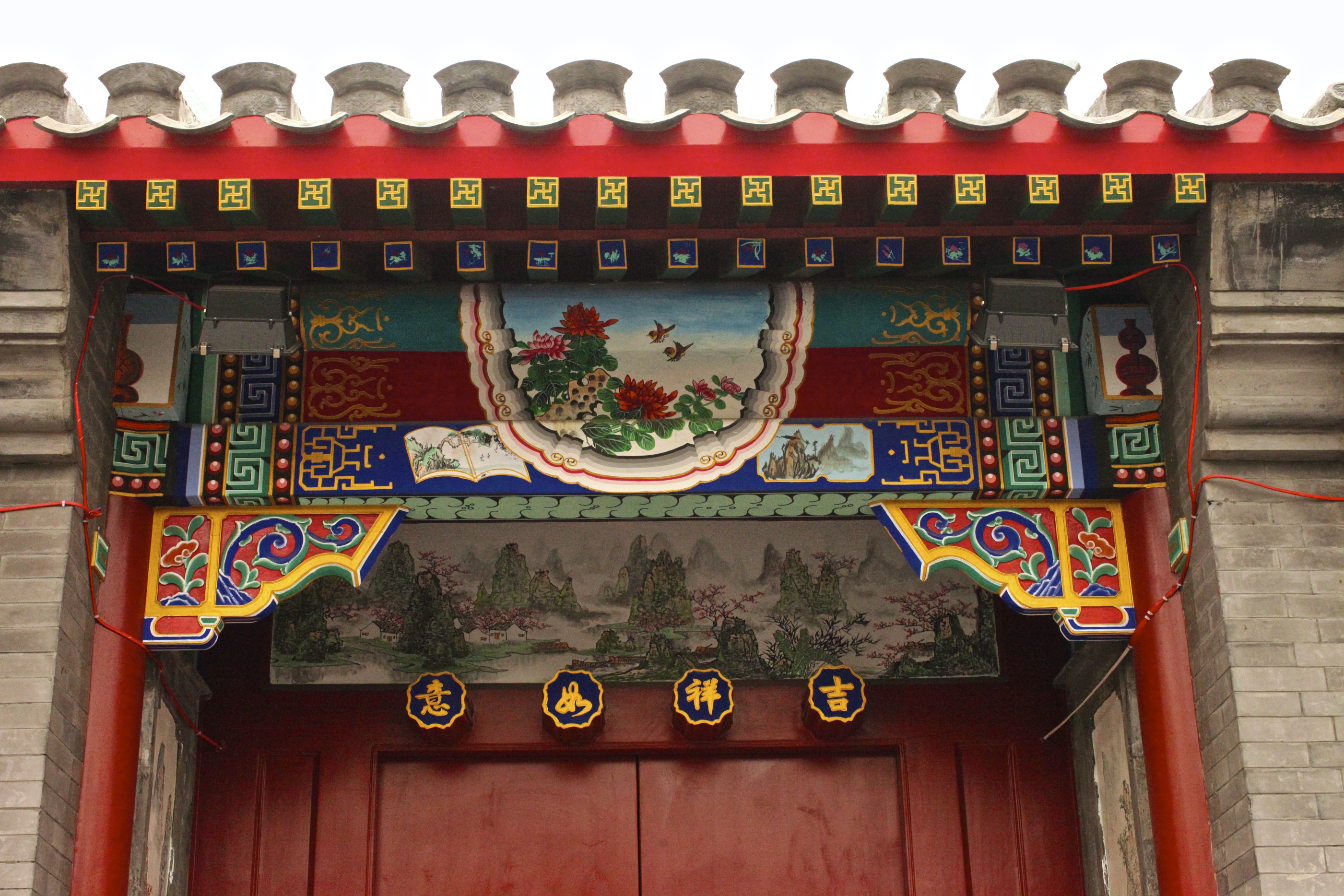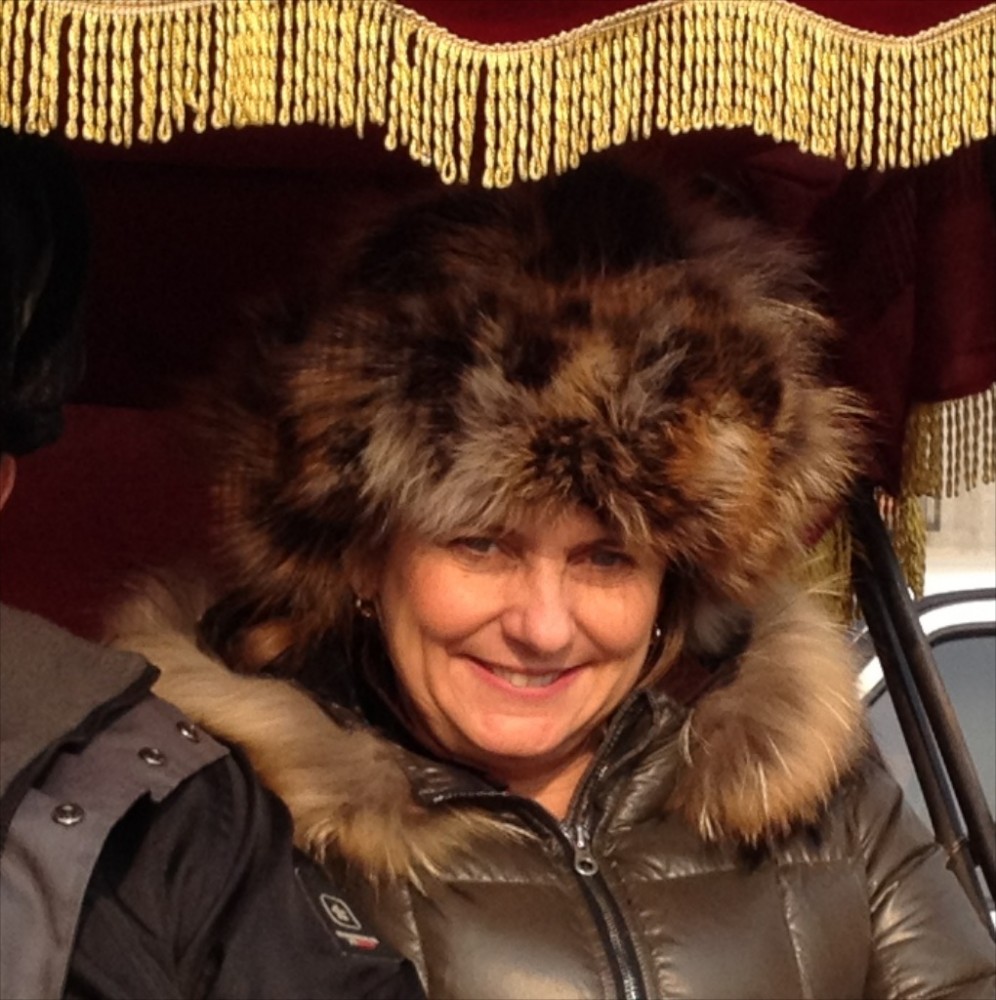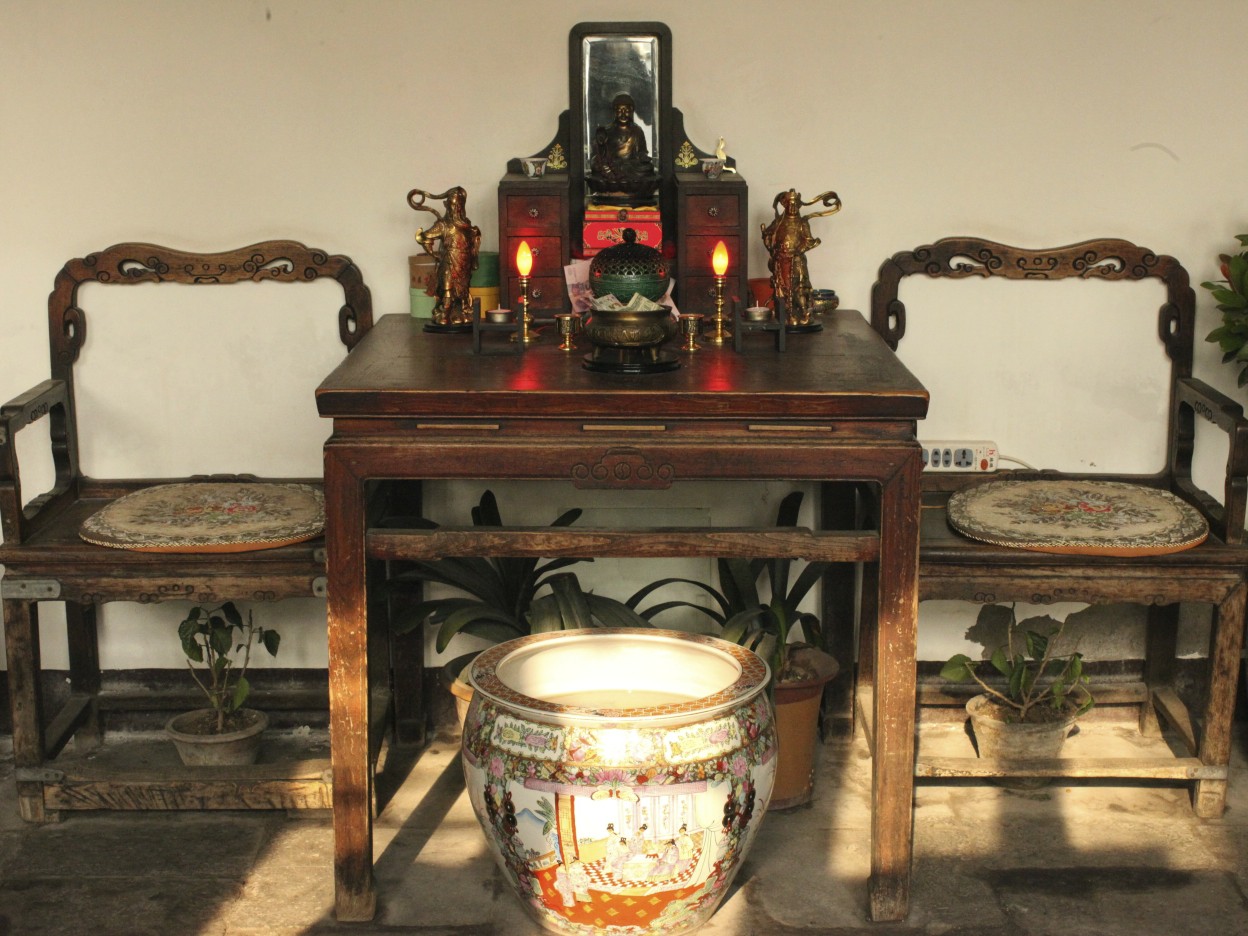LeeHutongs are a type of narrow streets or alleys, most commonly associated with Beijing, China. In Beijing, hutongs are alleys formed by lines of siheyuan, traditional courtyard residences.
Many neighbourhoods were formed by joining one siheyuan to another to form a hutong, and then joining one hutong to another. The word hutong is also used to refer to such neighbourhoods.
Since the mid-20th century, the number of Beijing hutongs has dropped dramatically as they are demolished to make way for new roads and buildings. More recently, most hutongs have been designated as protected areas in an attempt to preserve this aspect of Chinese cultural history.
It’s very cold in Beijing, and we have prepared our warmest boots and coats as per our guide suggestion. We are going to visit one of the several Hutongs in the city where only bikes and motorbikes are allowed. Our driver will have to wait at the entrance of the old neighborhood with the taxis.
My camera in place we are crossing wide boulevards of high rises filled with luxury brands flagship stores and shopping malls. After half hour drive wee stop in front of an old red entrance door where a guard standing with a superior posture , stares rigidly at a fixed focal point.
There they are, small “pedicabs teams” of Chinese drivers and Chinengligh speaking Hutong guides, ready to be at our humble service for one full hour unless we are fortunate enough to be authorized a visit at typical family home living in that neighborhood for generations. Extremely exited with the opportunity I tell Lee, who is a primary school English teacher , that I would be delighted if the occasion took place , even for just a few minutes to be able to register what is at Hutong family home and lifestyle.
We negotiate the possibility on the phone with the property owner and quickly agree on price. Our guide and driver just left for a lunch break. We will meet them back on the combined time and probably , like they did in the past, they will get us some warm and tasty dumplings as a good sign of Chinese hospitality
I must confess I am a little anxious not to see them anymore at our horizon, but they say a traveler must have courage to face the unknown so there we are, ready for the adventure factor. Luckily, our I-phone is working perfectly and the Google map as well. “We are on Lee” , I say while I get a warm colorful blanket on my lap , almost feeling the cold and humid red leather backseat up to the bones.
Pedaling at ease on his bike , while our pedicab driver shows less stamina, Lee starts the tour explanation : ” During China’s dynastic period, emperors planned the city of Beijing and arranged the residential areas according to the social classes of the Zhou Dynasty (1027 – 256 BC). The term “hutong” appeared first during the Yuan Dynasty, and is believed to be a term of Mongolian language origin meaning “water wells-
In the Ming Dynasty (early 15th century) the center was the Forbidden City, surrounded in concentric circles by the Inner City and Outer City. Citizens of higher social status were permitted to live closer to the center of the circles. Aristocrats lived to the east and west of the imperial palace.
The large siheyuan of these high-ranking officials and wealthy merchants often featured beautifully carved and painted roof beams and pillars and carefully landscaped gardens. The hutongs they formed were orderly, lined by spacious homes and walled gardens. Farther from the palace, and to its north and south, were the commoners, merchants, artisans, and laborers. Their siheyuan were far smaller in scale and simpler in design and decoration, and the hutongs were narrower.”
Nearly all siheyuan had their main buildings and gates facing south for better lighting; thus a majority of hutongs run from east to west. Between the main hutongs, many tiny lanes ran north and south for convenient passage.
Every now and then we stop to check the beautifully painted facades of those wealthy men, mostly the aristocrats of that time, on top of the doors richly depicted scenes of war and combat , mainly with the purpose of a recognizing of the owner’s home . A few young girls wearing pajamas quickly walk from an alley to another, merchants vending toys and expert cooks prepare food I am not sure of what kind. I prefer this time to wait for our driver’s dumplings!
Lee continues, ” Following the founding of the People’s Republic of China in 1949, many of the old hutongs of Beijing disappeared replaced by modern high rises . Many residents left the lanes where their families lived for generations for apartment buildings with modern amenities.”
We are now walking toward the home of an apparently wealthy lady.( These hutong homes are worth today a lot of money due to their extinction factor sometimes the equivalent of a few hundred thousand dollars) She has agreed to welcome us into her world which consists of a reasonable courtyard separating two main areas.
The common family area composed by a dining room , very pretty I must say, with cute ceramic Chinese statuettes that could be easily be found in a Sant’ Elmo flee market , Shanghai 1930 oval ceiling lamps in fabric, a tremendously beautiful ceramic planter used as a fish tank under an old Chinese console, framed photographies of family members with American tourists, lots of tiny plants close to the windows ,her bedroom and the children’s on the other side.
Everything looks extremely Kitsch but incredibly of taste somehow, I know it’s a paradox, but this is beacause objects, pictures on the wall, mix and match of textiles, colors and memorabilia have an authentic and genuine meaning as witnesess of the family everyday life, who at the end of the game has found an extra source of income opening peacefully and heartedly it’s private and super superprotected doors to strangers from around the world.
Fortunately, many Beijing’s ancient hutongs still stand, and a number of them have been designated protected areas. The older neighborhoods survive today, offering a glimpse of life in the capital city as it has been for generations.
Hutongs represent an important cultural element of the city of Beijing. Thanks to Beijing’s long history and status as capital for six dynasties, almost every hutong has its anecdotes, and some are even associated with historic events. In contrast to the court life and elite culture represented by the Forbidden City, Summer Palace, and the Temple of Heaven, the hutongs reflect the culture of grassroots Beijingers. The hutongs are residential neighborhoods which still form the heart of Old Beijing.
On the nearly 70 cms wide alley we walk back to the exit door. Freezing cold we thank numerous times the beautiful lady sending regards to her husband and daughters who we have met only in pictures but have a feeling we know from eternity.
On the pedicab, we wake up the driver who is now sleeping wrapped around our blanket. We are eager to drink and eat something hot. Our dumplings are on the way…
Thank God!
Joelle’s Tips:
There are several popular and famous Hutongtour lines . Below a few:
Nanluoguxiang Beijing hutong tour, Beijing hutong Shichahi tour, Houhai hutong tour, Dashilan Beijing hutong tour
Contact Beijing Hutong : Tel.: 86-10-84373008 / No. 1 Olympic Stadium South Road, Changyang District, Beijing, China.









































